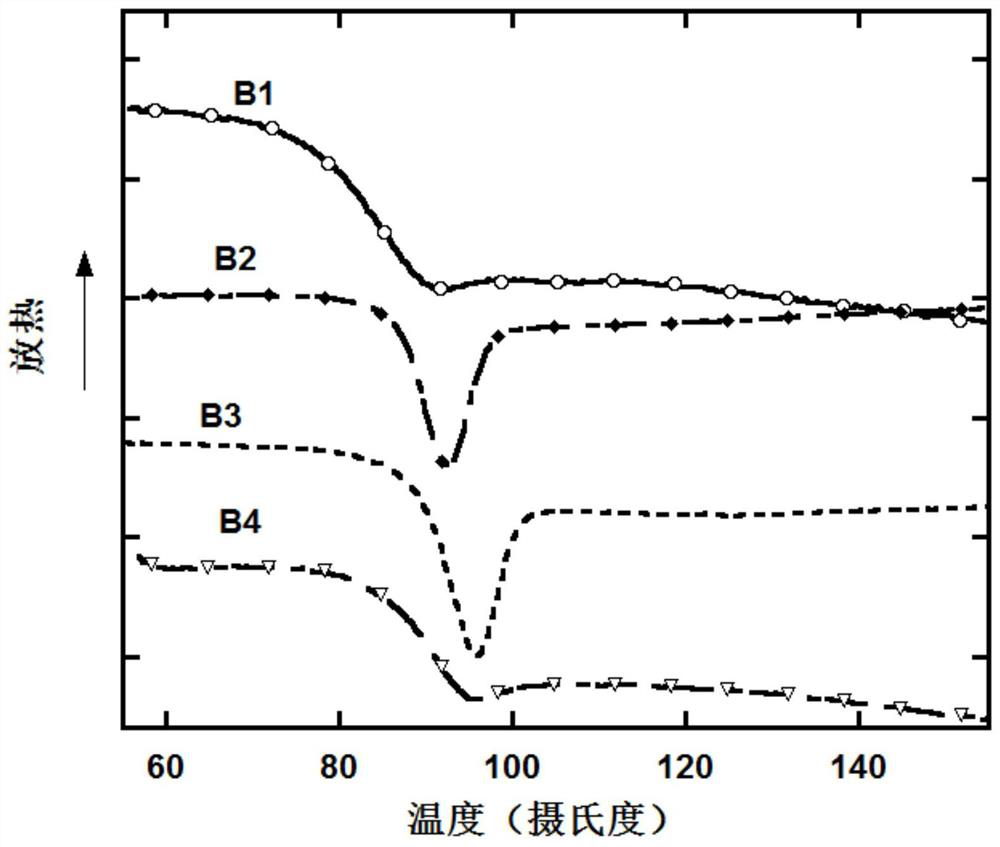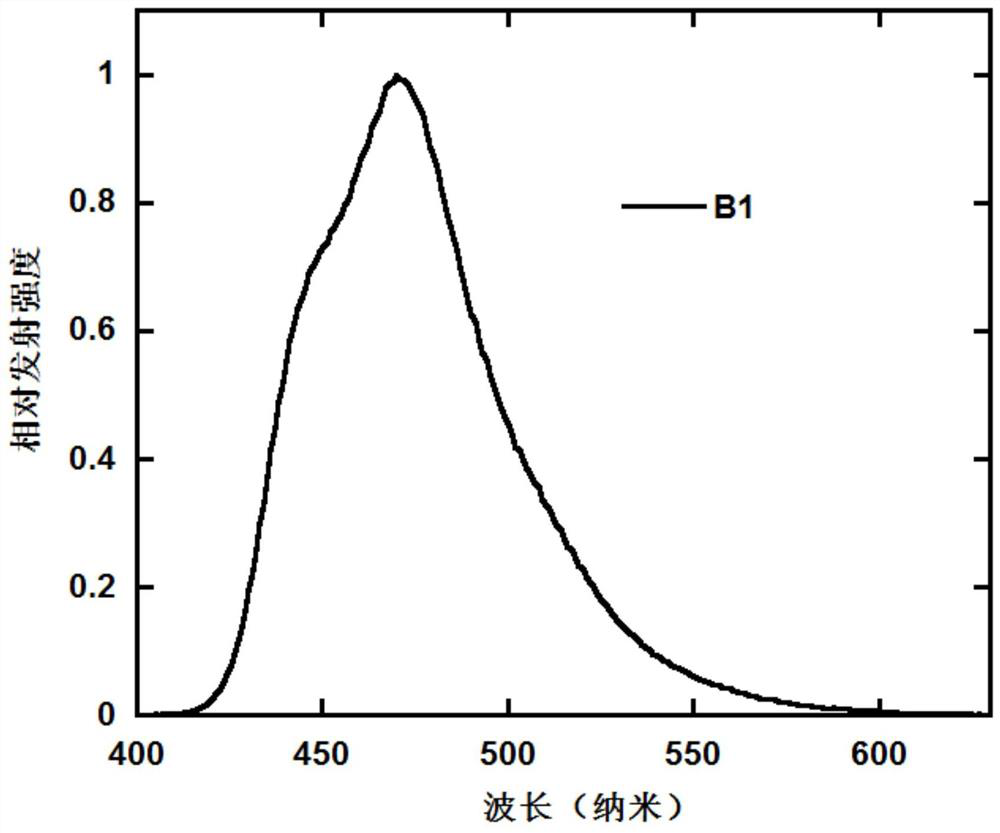Electroluminescent material, preparation method and application thereof
An electroluminescent material and reaction technology, applied in the direction of organic chemistry, etc., can solve the problems of not getting the expected color coordinates, weak electron-withdrawing ability, strong electron-withdrawing ability, etc. The effect of large flat structures
- Summary
- Abstract
- Description
- Claims
- Application Information
AI Technical Summary
Problems solved by technology
Method used
Image
Examples
Embodiment 1
[0045] Example 1 Preparation of ethyl 2-bromobenzoate
[0046] In a 500mL three-necked flask, 2-bromobenzoic acid (20.1g, 0.1mol) was dissolved in 200ml of ethanol, and 20ml of concentrated sulfuric acid was added dropwise to the reaction solution. After stirring for 12 hours at room temperature, the reaction was stopped and the reaction was quenched with water. , extracted with dichloromethane and dried with anhydrous magnesium sulfate. After the solution was concentrated, a yellow liquid was obtained, which was purified by silica gel column chromatography with a mixed solvent of petroleum ether / dichloromethane (7 / 1, v / v) as elution agent, the yield was 84%. 1 H NMR, 13 The results of CNMR, MS and elemental analysis show that the obtained compound is the target product, and the chemical reaction equation of the preparation process is as follows:
[0047]
Embodiment 2
[0048] Example 2 Preparation of ethyl 2-(4,4,5,5-tetramethyl-1,3,2-dioxaboran-2-yl)benzoic acid ethyl ester
[0049] Under the protection of inert gas, ethyl 2-bromobenzoate (17.5g, 76.4mmol) was dissolved in 250ml of anhydrous tetrahydrofuran, and the n-butyllithium solution (38.2ml of 2.4mol / L) in n-hexane was slowly added dropwise. , 91.7 mmol), after stirring for 1 hour at room temperature, 2-isopropoxy-4,4,5,5-tetramethyl-1,3,2-dioxaborane (25.6g) was added to the reaction system , 0.14mol), stopped the reaction, quenched the reaction with water, extracted with dichloromethane and dried with anhydrous magnesium sulfate, the solution was concentrated to obtain a khaki liquid, which was purified by silica gel column chromatography, mixed with petroleum ether / dichloromethane Solvent (5 / 1, v / v) as eluent gave a white solid in 87% yield. 1 H NMR, 13 The results of CNMR, MS and elemental analysis show that the obtained compound is the target product, and the chemical reaction...
Embodiment 3
[0051] Example 3 Preparation of diethyl 2,2'-(5,5-dioxodiphenyl[b,d]phenyl-3,7-yl)bis(benzene-3-carboxylate)
[0052] Under an argon atmosphere, into a 500 mL three-necked flask, add ethyl 2-(4,4,5,5-tetramethyl-1,3,2-dioxaboran-2-yl)benzoic acid ethyl ester (8.4g, 30.4mmol), 2,7-dibromo-S,S-dioxydibenzophenone (20.0g, 45.6mmol), tetrabutylamine bromide (0.49g, 1.52mmol), catalyst triphenyl Palladium phosphine dichloride (1.76 g, 1.52 mmol) and 200 mL of toluene were heated with stirring. When the temperature was stable at 110 °C, an organic base (20 mL) and K were added. 2 CO 3 (41.95g, 0.30mol) aqueous solution 42mL, reacted for 12h. After concentrating the reaction solution, it was purified by silica gel column chromatography, and a mixed solvent of petroleum ether and dichloromethane (3 / 1, v / v) was used as the eluent to obtain a pale yellow solid with a yield of 75%. 1 H NMR, 13 The results of CNMR, MS and elemental analysis show that the obtained compound is the targe...
PUM
| Property | Measurement | Unit |
|---|---|---|
| glass transition temperature | aaaaa | aaaaa |
| glass transition temperature | aaaaa | aaaaa |
| glass transition temperature | aaaaa | aaaaa |
Abstract
Description
Claims
Application Information
 Login to View More
Login to View More - R&D
- Intellectual Property
- Life Sciences
- Materials
- Tech Scout
- Unparalleled Data Quality
- Higher Quality Content
- 60% Fewer Hallucinations
Browse by: Latest US Patents, China's latest patents, Technical Efficacy Thesaurus, Application Domain, Technology Topic, Popular Technical Reports.
© 2025 PatSnap. All rights reserved.Legal|Privacy policy|Modern Slavery Act Transparency Statement|Sitemap|About US| Contact US: help@patsnap.com



